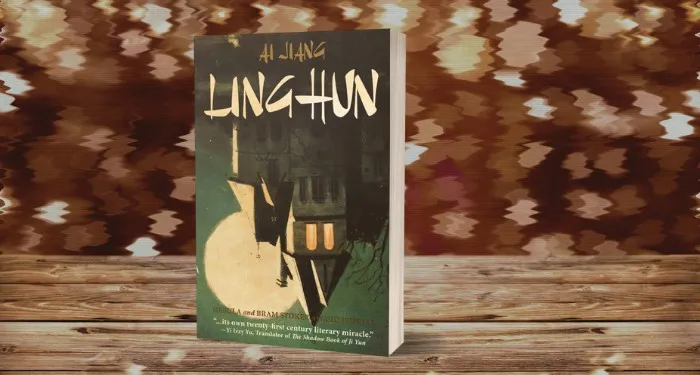James Schuyler was a great nature poet. But that way of putting it is misleading because he usually observed nature from indoors, framed by a window, and the nature he was writing about was often a city view with skyscrapers, or an arrangement of tulips on a table, or the fanciful names in a flower catalog. And the word “nature” isn’t right because it refers to something large and abstract, whereas Schuyler was writing about “the day,” meaning the sheer offhand presence of the world, which is always particular and local.
The scenes and sensations Schuyler captures in his poetry are both ordinary and hypervivid. His poems can make you feel the funk of a humid afternoon, taste the melted butter on a plate of scallops, or shiver in a new snow’s blue shadows. His power as a describer, his ability to convey the sensory qualities of things, is the result of a peculiar intensity of focus. Schuyler had a level of concentration on what he was observing that could be achieved only by shutting other things out. Yet whatever Schuyler turns away from drifts in the background of the poem, where it remains active as a motivating pressure, coloring and sharpening his observations.
“Buried at Springs,” Schuyler’s elegy for the poet Frank O’Hara, is an example of this effect. When O’Hara died in 1966 after being struck by a dune buggy, Schuyler was in Maine, and he did not attend his friend’s burial in the Long Island town of Springs. The poem begins in a state of mundane emergency:
There is a hornet in the room
and one of us will have to go
out the window into the late
August midafternoon sun. I
won.
The pest eliminated, Schuyler studies the Maine landscape with his customary freshness and precision:
A launch draws
two lines of wake behind it
on the bay like a delta
with a melted base.
But what’s on his mind is the fact that he is sitting where O’Hara sat eleven years before, looking at the same view, when the two friends took turns (first Schuyler, then O’Hara) visiting the painter Fairfield Porter at his summer house. Nothing now is quite the same, and O’Hara, like the hornet, is gone. The “faintly clammy day” is so full of O’Hara’s absence (and by implication the thought of his fatal injuries) that it is “like wet silk/stained by one dead branch/the harsh russet of dried blood.”
It was, Schuyler said, the “broken rhythm” of a poem by O’Hara titled “The Three-Penny Opera,” which he came across in 1951, that provided a formal model for “Salute,” Schuyler’s first poem in what became his distinctive manner. Schuyler was taken with O’Hara’s way of “breaking a line where it would seem logical not to break it, and leaving such things as a dangling ‘a’ or ‘the,’” and he began experimenting with the same technique. He was not alone in finding inspiration in this magpie manner. O’Hara and the other poets in his circle were reading one another, writing for one another, and writing collaboratively. Over time they evolved a casual, improvisatory style (which was also an attitude toward poetry, culture, and daily life) that has endured, so that today we can speak of “generations” of poets working in the same mode, enlarged and updated but still bearing the DNA of its inventors.
“New York School poetry” is the name of that durable style. It is one of those labels about which those designated tend to be dismissive while still having opinions about who should be included. Schuyler is amusing about this in a 1971 letter to the poet Barbara Guest, after the label had started to gain currency: “The New York School does not exist. Let us now have a good wrangle about who is entitled—seriously entitled—to rate standing as a member of it.” In Schuyler’s view, “the Founders of the NY School…are not a trefoil, but a star, a five-pointed star, at the very least.” The “trefoil” version of the New York School consisted of O’Hara, John Ashbery, and Kenneth Koch, who met as students at Harvard. The “five-pointed star” added Guest, the one woman among these “Founders,” and Schuyler, who did not go to Harvard and was sensitive about it.
There was nothing privileged about Schuyler’s youth. Jimmy, as friends always called him, was born in Chicago in 1923. His father, Marcus Schuyler, was a newspaperman with high spirits and a gambling problem who squandered the family’s money. After Jimmy’s mother, Margaret, lost her patience and divorced Marcus, he disappeared from his son’s life. Margaret married a construction engineer named Berton Ridenour when Jimmy was seven, and the Ridenours had a son, Fred, soon after that. Schuyler took his stepfather’s name—he was called James S. Ridenour until he was twenty-three—but they had little else in common, and Jimmy was never comfortable in the new family, which relocated several times before settling in East Aurora, New York.
As a high school student he burrowed into books, with a taste for witty, decadent writers. When he told his mother he was gay, she replied, “Just because you like Oscar Wilde, it doesn’t mean you have to do all those things.” His future literary vocation crystallized for the teenage Jimmy when he had a sort of vision. He was reading Unforgotten Years (1938), a memoir in part about Walt Whitman by Logan Pearsall Smith, who extolls Whitman’s “receptivity to experience” and his “ability to embody in words some one of Nature’s aspects.” As Schuyler looked up from his book, “the whole landscape shimmered,” and he realized that he “wanted to be a writer and would be one.”
But for years being a writer remained mostly an idea. In 1941 Schuyler enrolled as a scholarship student at Bethany College, a small Christian liberal arts school in West Virginia. During his second year, not long after learning that his father had died, he flunked out. Then he joined the US Navy. On his first voyage, he witnessed the sinking of a ship after a collision with another boat, a disaster in which thirty-five men died. His poem “A Grave,” written about a decade later, describes watching the agony of a sailor who “sank from sight” and drowned.
Back in port, Schuyler went AWOL in New York City. When he finally reported back to ship twenty-nine days later, just before he would be classified as a deserter, he was thrown into a military prison, where he was assigned hard labor in harsh winter conditions. He underwent examinations and interviews before being given an “UNDESIRABLE DISCHARGE” on the grounds that he was a homosexual. Rather than welcoming him home, his mother forced him to write a letter to the navy (or she wrote it and had him sign it) asserting that he had “destroyed” his sexual preference for men and petitioning for reinstatement—unsuccessfully, of course.
Nathan Kernan’s biography of Schuyler, the first of the poet, patiently reconstructs his difficult youth from fragmentary evidence. Kernan makes the case that Schuyler’s early experiences of trauma and shame never left him and partially explain why he was slow to publish a book of poetry and averse to giving public readings of his work until he was in his sixties. Kernan also points out that beginning in his youth Schuyler tended to withdraw into himself when he was under stress, behavior that became both a cause of his problems and a mechanism for coping with them. The tendency was a harbinger of the increasingly disabling mood disorder Schuyler suffered from for the rest of his life. Kernan suggests it was also the basis for his special powers of description:
This kind of retreat into deep passivity would remain his survival strategy throughout his life in times of setback, illness, anxiety, and depression. At times it led him into almost indescribable depths of squalor and self-destructive behavior. But it also may be connected to his uncanny ability to “transcribe” the physical world in a seemingly unmediated way.
“Salute” was written while Schuyler was recovering from a breakdown, first in New York’s Bellevue Hospital, then in Payne Whitney Westchester, a clinic in White Plains, New York.* Here the writing of poetry is associated with health and personal renewal, through praise of the natural world. But Schuyler’s argument is more complicated than that makes it sound. He asks:
If one
remembers what one meant
to do and never did, is
not to have thought to do
enough?
What Schuyler had meant to do is gather the wildflowers in a particular field and “study them one afternoon/before they wilted.” He didn’t do it, but maybe it’s the thought that counts? Schuyler’s odd syntax suggests that thought is something “to do,” almost to perform physically, and in that way quite as actual and substantive as any deed. Having raised the possibility, he goes forward without regret, saying, “Past/is past. I salute/that various field.”
Kernan reads this short poem as a fable about literary vocation. It’s as if Schuyler were thinking: I failed out of college and was thrown out of the navy. Now I’ve wound up in the hospital. I am further away than ever from becoming a writer. Is it enough to have once felt sure I would become one? Is it enough to have seen the landscape “shimmer”? But in fact Schuyler is realizing his ambition, not giving up on it, as he writes, listing the names of the flowers in the remembered field, which is a way of gathering them that will prevent them from ever wilting. He is finding words for the physical world and his depth of feeling for it. He is writing a poem.
Poetry is on the side of health in “Salute,” yet Schuyler is writing it in a hospital. He always needed some insulation from the world to write so beautifully about it. When he was well, friends and lovers provided that sheltering environment. As a young man Schuyler was handsome, with a square-jawed midcentury movie star look, and he was adept at finding interesting men who could supply him with care and enlarge his experience. He had numerous romantic and sexual partners. Some of the most notable were Bill Aalto, a hero of the Spanish Civil War and partly a model for Robert Jordan in Hemingway’s For Whom the Bell Tolls; Edwin Denby, a poet and dance critic; and Arthur Gold, who performed with Robert Fizdale as celebrated, globe-trotting duo pianists.
O’Hara and Schuyler lived together on and off for five years, but they were never lovers. (At one point while Schuyler was going with Gold, O’Hara had an affair with Fizdale.) When Schuyler moved out for a period, Joe LeSueur, a friend of O’Hara’s, replaced him. Then Schuyler came back, and all three men lived together in the same small East 49th Street apartment. But Schuyler was sinking into depression, and his “black looks” made Joe and Frank feel he wanted to kill them. O’Hara left with LeSueur, who later commented: “Frank was capable of great compassion…. But if someone went off the deep end, his gift of sympathy went out the window…. Frank couldn’t get away from Jimmy fast enough.” Their friendship never fully recovered, and traces of rivalry and resentment lingered on both sides, which makes Schuyler’s elegy for O’Hara that much more layered and poignant.
In 1961, after another serious breakdown, Schuyler was admitted to Grace New Haven Hospital in Connecticut. (W.H. Auden, a close friend of Schuyler’s in the 1940s, had paid for his stay at Payne Whitney; James Merrill quietly arranged for this treatment and paid for it through his personal foundation.) After about three months Schuyler was released into outpatient care. Fairfield Porter picked him up and drove him to Maine for the summer, assuring him, “I’ll never let you down, Jimmy.”
So began Schuyler’s twelve years as a semiofficial member of the Porter family. He lived with Porter and his wife, Anne, and their children in their homes in Southampton on Long Island and on Great Spruce Head Island in Penobscot Bay. Schuyler called this the “happiest period” of his life. His and Porter’s intimacy was profound and multidimensional: literary, artistic, and intellectual; fraternal and paternal (Porter was sixteen years older); domestic and sexual. Although Porter and Schuyler kept the sexual part of the relationship a secret, the depth and intensity of their connection was evident to everyone. Porter woke Schuyler every morning by going to his room and bestowing a ceremonial kiss.
As the Porter children grew, they became uneasy about Schuyler’s presence. Eventually they prevailed upon their parents to ask him to leave. He was disinvited to Maine, but it took him three more years to give up their Southampton home. No longer the Porters’ responsibility, he became the responsibility of, in a sense, the whole New York School. For the rest of his life he was sustained by a patchwork of foundations, trust funds, and personal donations. Public readings were held to raise money for his support. He continued to endure breakdowns and to need hospital care. He carried so many pills with him that, as the painter Bob Dash recalled, “you could hear them rattling in his pockets.” Twice, while smoking in bed, he set fire to his room; the second time, when he was fifty-three, he needed skin grafts and a tracheotomy to recover from third-degree burns. Soon after recovering, he moved into the Chelsea Hotel, where for the rest of his life he depended on dedicated friends and paid assistants. Some of the assistants became dedicated friends as well, including Tom Carey, a young actor with whom Schuyler fell in love to the point of obsession, and Eileen Myles, who was then in their late twenties and just beginning to publish poetry.
Among the oldest and closest of Schuyler’s friends was John Ashbery. The letters they exchanged from the 1950s onward—in which, like a couple of kids, they playfully address each other by various pseudonyms, each more improbable or erudite than the last—were one of the constants in Schuyler’s life. Ashbery had a way of turning up in a crisis with a combination of firmness and consideration that was steadying for Schuyler. They had both grown up in western New York state, and that, along with memories of the movies and magazines of their childhoods, cemented the bond, despite Ashbery’s Harvard BA. As Schuyler observed with some pride, “I, like John A., am indelibly stamped by the outer suburbs.”
Schuyler and Ashbery shared enough in style and sensibility to write a novel together (a charming one called A Nest of Ninnies, which they began as passengers in the backseat of a friend’s car and then worked on intermittently for seventeen years). Yet they were fundamentally different poets. Typically, Ashbery’s poems have a floating quality, untethered from a specific time or place, and they tend to lack a stable speaker identified with Ashbery. Schuyler’s poems gain their power by being rooted in particular settings, and he is usually present in them in much the same way he is present in letters. (Even in “The Fauré Ballade,” a poem that consists entirely of quotations from various texts, mixed with remarks from New York School friends like O’Hara, the collage of other people’s voices hangs together because it reflects Schuyler’s taste in books and people.) There is a quality of vulnerability and immediacy in his work, therefore, that we don’t often get in Ashbery. What Schuyler risks (and does not always avoid) is sentimentality. The reward is an emotional authenticity that Ashbery seldom allowed himself, though he prized it in his friend’s poetry.
Schuyler knew that, by comparison with the high tone and impersonal aesthetic of modernist poetry, his subjects might seem trivial and his approach to them literal-minded. In “Dec. 28, 1974,” he remarks defensively:
“Your poems,”
a clunkhead said, “have grown
more open.” I don’t want to be open,
merely to say, to see and say, things
as they are.
That phrase—“things as they are”—is conspicuously borrowed from Wallace Stevens’s poem “The Man with the Blue Guitar.” It aligns Schuyler with Stevens by stressing Schuyler’s seriousness, his focus on essentials over and above the everyday. Yet the date in the title, with its abbreviation “Dec.,” presents the poem as a letter or a diary entry, in effect redefining what “things as they are” include and how to capture them.
For Schuyler, seeing and saying “things as they are” often meant writing in or about states of extreme mental distress and disorientation. This is surprising because breakdown is not what New York School poetry is usually about. A poet like O’Hara so underplays emotional and psychological difficulty that the subject feels almost out of bounds, as if it were in bad taste. But Schuyler found a way to write poetry that neither sensationalizes nor skirts his mental illness and the suffering that came with it. Rather than self-pitying (except in a comic spirit), the poems he wrote while ill or recovering from illness are for the most part startlingly clear and composed.
Kernan quotes Myles’s account of the day a “ravaged” Schuyler, who looked like he was “going mad,” indeed “as though he was about to burst,” sat down at a table and wrote the poem “Shaker.” “It gave me this sort of window into his poetry,” Myles recalled. “It seemed to be that he was composing a universe of calm out of complete franticness.” As with the other poems he discusses, the background Kernan fills in for “Shaker” gives the reader crucial information. “There was simply/nothing to look at:/a white empty room,” Schuyler writes, presumably recalling a particular hospital room. With the help of the biography, we know Schuyler is so ill as he writes these words that he knows he must call his doctor, and this will mean being admitted to the hospital and facing such a room again very soon.
Why is the poem called “Shaker”? The title seems at first to refer ironically to the simplicity of the remembered hospital room. “’Tis a gift to be simple”? Not when “simple” looks like this! But the poem does more with the title when Schuyler relates an encounter in the ward:
I looked back
at the girl who looked
back
at me: perhaps to be
the last Shaker
at Sabbathday Lake.
Suddenly the hospital ward becomes a Shaker village in which Schuyler is the last one standing. There is also a pun at work: in his unsteady state, Schuyler is literally a “shaker.” The combination of incongruity and aptness in the comparison makes for the sort of wild swerve his best poems pull off. The result is both piercing and comic, retaining his characteristic lightness of touch. As Schuyler notes elsewhere, “The serious things in life are almost always funny.”
About Schuyler’s poem “February,” from which the title A Day Like Any Other comes, Kernan comments, “The effect is not so much descriptive, as one of putting the reader in the position of making the same discoveries, at the same time, as the poet.” That sense of shared discovery, which is typical of Schuyler’s poetry, is created by his prosody. His signature adaptation of O’Hara’s “broken rhythm” was to write “skinny” (sometimes very skinny) poems. Schuyler’s short lines, insistently enjambed, make us work to track their syntax as it unfolds from line to line. This requires a special alertness as we retrace the poet’s decision-making, almost as if we were present with him in the moment of composition.
The skinny poem has the further virtue of isolating individual words and phrases, the effect of which is to heighten our awareness of the verbal medium. Schuyler loved to put stock phrases in scare quotes and hold them up, as if in tweezers, to be inspected and enjoyed. He liked to call our attention to homely names like “Sabbathday Lake,” and to coin nonce words like “snowability” and—it’s a verb—“befuzz.” In an essay about Porter’s work, Schuyler declares, “The paint is itself a palpable fact that holds an imprint of life and infuses life into the image.” The same goes for how Schuyler uses words.
Schuyler’s health deteriorated after the Porters asked him to leave, but it was in this period that he began writing his most ambitious poetry; it was “as though,” Kernan writes, “the request to leave had given him an unconscious desire to show the Porters what he was capable of.” He returned to his starting place in Whitman and began a long-line poem called “The Crystal Lithium.” This became the title poem in his second commercially published volume, which appeared in 1972. Three more collections followed: Hymn to Life (1974), The Morning of the Poem (1980), and A Few Days (1985). Each of these books features both short-lined lyrics and a long title poem in long lines that load page after page with words, filling in the white space his skinny poems leave open.
Ashbery’s poetry collection Self-Portrait in a Convex Mirror (1975) won the National Book Award, the National Book Critics Circle Award, and the Pulitzer Prize, marking as much as any event the coming of age of the New York School. The long title poem of his friend’s prize-gobbling book must have encouraged Schuyler to write a poem of similar or even greater length. “The Morning of the Poem” was composed while Schuyler was staying in his childhood bedroom on a rainy summer visit to his mother in 1976. Its form and spirit are unabashedly Whitmanesque, but the content is Proustian, a surging flow of personal memories, sustained for forty-four densely packed pages. The collection in which it appeared, along with some of Schuyler’s finest shorter poems—such as “This Dark Apartment” and “Dining Out with Doug and Frank”—won the Pulitzer Prize. When he learned that Ashbery had been one of the judges, Schuyler was unhappy. He would have liked to win without a hint of New York School favoritism.
In “The Morning of the Poem,” Schuyler refers to “my dead best friend,” by which he means Porter, who had died suddenly of a heart attack in 1975. He veers away from the subject, however, because “this is not/your poem.” He insists that his poem for Porter “is there,” somewhere inside of him, “and/needs only to be written down.” Yet, Schuyler continues, it “doesn’t matter” if he never writes the poem—and in fact he never did write it—because “the truth, the absolute/Of feeling, of knowing what you know, that is/the poem.” This is a restatement of the idea proposed in “Salute” that having “thought to do” might be enough.
But feeling is only half the equation. Days disappear, and what we feel goes with them. Feeling needs images in order to find expression, and feeling in poetry depends on words, just as in painting it depends on paint. Schuyler understood this, of course, and he makes the point a few pages later. What matters in the end, he says, switching from long to skinny lines, is
How the thing said
Is in the words, how
The words are themselves
The thing said…
A word, that’s the poem.



















 English (US) ·
English (US) ·